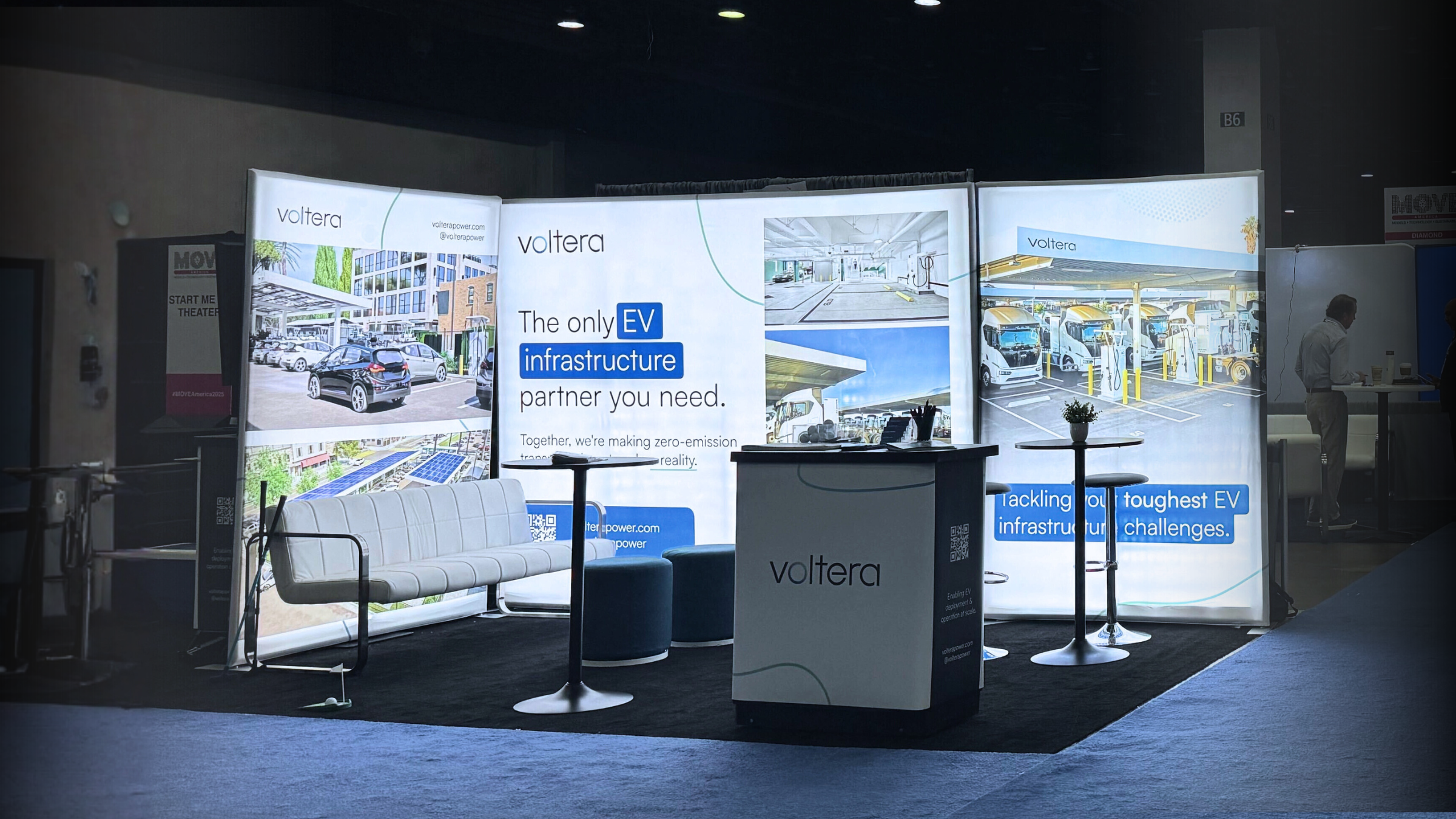EV Charging Landscape: Key Insights from MOVE America 2025
At MOVE America 2025, Voltera had the opportunity to highlight how the future of mobility depends on more than just vehicles and chargers; it depends on the places where those assets come to life. Jonathan Colbert, Voltera’s Vice President of Marketing and Business Development, joined leaders from across the transportation ecosystem to share how the EV charging landscape is being reshaped by the intersection of real estate, infrastructure, and fleet needs.
Jonathan’s session unpacked one of the most pressing challenges in fleet electrification; how zoning, permitting, and site selection can shift from being roadblocks to becoming launchpads. His perspective provided not only a look at today’s barriers, but also practical insights into how the industry can accelerate deployment and scale.
Why Real Estate Defines the EV Charging Landscape
When people think about EV charging, their minds often jump to plugs, power, or networks. But Jonathan emphasized that the real gatekeeper is real estate. Without the right site in the right location, even the most advanced technology cannot deliver on its promise.
He explained that real estate challenges are threefold:
- Zoning: Regulations vary widely by jurisdiction, creating uncertainty and long lead times.
- Permitting: Complex approval processes often lag behind the pace of fleet electrification.
- Site Selection: Urban density and land competition make it difficult to secure locations that balance access, scale, and utility capacity.
The EV charging landscape isn’t just about where chargers can be installed, it’s about how quickly fleets can move from concept to operations in markets that matter.
From Roadblocks to Launchpads
Jonathan’s presentation reframed these challenges as opportunities. Real estate, he noted, can evolve from a barrier into a strategic advantage when approached with the right partnerships and long-term vision.
How to Turn Challenges into Opportunities
- Collaborative Site Planning: Working with cities, utilities, and developers early in the process reduces delays.
- Integrated Infrastructure Design: Combining charging with fleet management facilities, maintenance bays, and driver amenities increases utilization and value.
- Scalable Deployment: Prioritizing modular design enables sites to grow with fleet demand rather than lagging it.
This approach aligns with Voltera’s broader strategy: investing the capital, expertise, and operational support needed to unlock real estate that works for fleets.
Automakers Are Shaping the Future
Another key point in Jonathan’s session was how automakers are no longer passive participants in charging infrastructure. Instead, they are actively steering the EV charging landscape by investing in networks, striking partnerships, and promising access to nearly every charger in the U.S.
- Legacy OEMs are founders and owners of networks
From IONNA to ChargeScape, automakers are moving upstream into charging strategy.
- Complimentary charging deals are standard
Nearly every major OEM is offering integrated charging incentives to boost adoption.
- The gatekeeper role is expanding
Automakers’ involvement means that the future of charging access will be heavily shaped by OEM strategy, not just infrastructure providers.
This trend reinforces the importance of alignment between fleets, networks, and OEMs to avoid fragmentation in the EV charging landscape.
TIP: Find this article information in a dynamic infographic right here.
Robotaxis and the Power of Partnerships
Jonathan also touched on another evolving frontier: autonomous vehicles and robotaxis. Here, the EV charging landscape looks different. Success does not come from hardware alone but from partnerships.
- Uber, Lyft, and Baidu are showing that scaling robotaxis requires collaboration across platforms, automakers, and tech developers.
- Geographic concentration matters. California, Arizona, and Texas are the epicenters of development in the U.S., with Waymo and Uber emerging as leaders.
- Collaboration is a competitive edge. Winners will be those who combine knowledge, scale, and infrastructure rather than tackling it alone.
For Voltera, this reinforces the need to deliver flexible, urban charging hubs that can serve not only today’s ridehail fleets but also the AV fleets of tomorrow.
Voltera’s Proven Impact
Jonathan concluded by grounding the discussion in Voltera’s real-world deployments. Across California, Texas, Arizona, and Florida, Voltera is delivering charging hubs that prove how real estate, design, and operations come together to accelerate electrification.
Recent Highlights
- 359+ charging stalls and 35+ MW of capacity in latest deployments.
- San Francisco & Santa Monica: Urban hubs supporting high-volume rideshare and delivery fleets.
- Austin, Texas: A combined charging and fleet management site.
- Miami, Florida: 79 fast charging stalls, one of the nation’s largest light-duty depots.
These sites show that the EV charging landscape is not a distant vision, it’s being built today, with purpose-built infrastructure designed to scale alongside fleet needs.
Building the Next Phase of Mobility
MOVE America 2025 underscored how electrification is as much about place as it is about technology. Jonathan's insights made it clear that the EV charging landscape will be defined by those who can overcome real estate hurdles, align with automakers, and build partnerships in an increasingly connected mobility ecosystem.
At Voltera, we’re proud to play a role in this transition, turning roadblocks into launchpads and helping fleets of every kind make the shift to zero-emission operations.
Are you ready to partner with us?
CTA: Get in Touch!

